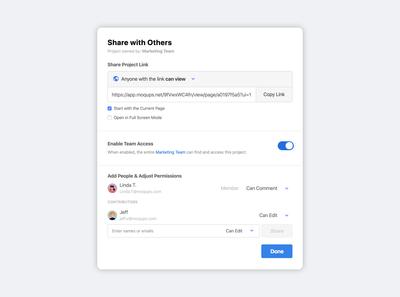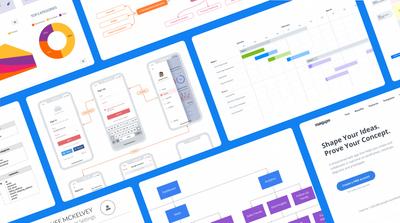Until a couple of weeks ago, having an e-commerce option or a work-from-home policy just seemed like smart business plans.
Now, they're survival strategies and public services.
As families and companies scramble to cope with the new reality by distancing themselves physically, they’re also being asked to coordinate and collaborate to an unprecedented degree.
There’s a rising sense of both social and organizational solidarity as we all struggle to stay safe, maintain a sense of community, and provide for continuity in the face of disruption.
Every business is coming to terms with the WFH reality, and looking for ways to maintain office chemistry, collegiality, and productivity – without the actual office.
Learning to work together while apart
We’re reminded, profoundly, of how much we need one another – and how we need to work together to confront this challenge. And that will require collaboration on an entirely new level. We’ll need different workflows and protocols to reflect our work-from-home reality, and to stay productive.
Over the next few months, as we continue to build and deliver products, we’re going to have to simultaneously design and implement new ways of working.
At Moqups, we want to help – and we hope we can.
Moqups was designed to make visual collaboration possible, especially for distributed teams. That’s why we feel we have an important role to play as current customers expand their remote workforce – and new customers turn to Moqups for solutions and support.
In today’s post, we’re going to look at a few specific challenges that teams are likely to face as they shift to WFH – and how they can best use Moqups to make that transition easier.
Reflect your office structure online
One of the immediate problems that companies face, as their employees shift to remote work, is how to mirror the protocols and permissions of the physical office within the online world.
Who gets access to what visual spaces and to what projects? Is there private space for experimentation and exploration? Is there common space for brainstorming and planning? And how do teams engage with one another – to have conversations, provide feedback, and make decisions?
When teams are remote and distributed, it’s important that companies recreate not just the hierarchies of the brick-and-mortar office, but its social structures, morale, and ease of companionship. To do that, teams need to find that delicate balance between transparency and protected space.
We recently released new Team Roles and Project Permissions features to help address these issues.
For instance, within Moqups, a team’s Admin and Managers can invite members, assign roles, and set access.
At the project level, there’s a whole other layer of granular sharing controls available. Creators can choose to work privately, invite individual collaborators, or open up projects to the entire team.
By default, all projects are private and by invitation only. Collaborators can be added, and their permissions adjusted, on an individual basis.
Of course, the project can instantly be shared with the entire team just by toggling Enable Team Access to the ‘on’ position.

Setting up an online team is just one way your company can help ease the transition to remote work. For a quick overview of these capabilities, check out our recent blog post.
And, for the nitty gritty about how to use and implement these features, check out the Teams & Roles and Sharing & Permissions sections of our Help Center.
Adjust and adapt to the realities of WFH
Working from home has always been challenging. It’s a lot tougher in the midst of this crisis.
Employees have had to establish instant home offices – often with children home from school, outside activities restricted, and limited support from caregivers or extended family. We understand this keenly, because Moqups made the shift to an all-remote workforce a couple of weeks ago.
Companies need to be patient as their remote workers establish new rhythms, and learn to balance their domestic and professional obligations.
The key to managing these overlapping commitments is for individual team members to establish both core and flexible hours. Core hours allow for essential, realtime conversations and collaboration, and flex hours accommodate the inevitable commitments and interruptions of stay-at-home work.
To achieve this balance of both fixed and flexible work, organizations need to rely on a combination of synchronous and asynchronous communication. This combination is familiar to distributed teams who, before the Covid-19 crisis, had learned to pass the work baton seamlessly across multiple time zones.
One of the key lessons from that distributed experience is that teams need opportunities to communicate in real time, but they also need asynchronous channels for ongoing feedback and documentation – especially now that checking with a colleague down the hall is no longer an option.
Moqups has three great features that can help your team with both synchronous and asynchronous work.
Live Collaboration makes it easy to create together in real time
When you are able to work together, your team can use our Live Collaboration tools to think, create and edit in real time.
No matter whether you are brainstorming, strategizing or wireframing, our live presence lets you find your colleagues, locate the objects they’ve selected, and follow their cursor as they edit – putting your whole team on the same page, at the same time.
To find out how Live Collaboration can work effectively in combination with our Teams, Sharing and Permission features, please check out our recent blog post.
Comments help teams hear all voices and make quick decisions
Live Collaboration works in combination with our commenting feature, so that teams can provide feedback, right on the design, either in real time or asynchronously.
Comment threads are great for soliciting input, exploring options, coming to consensus, and making decisions. And because they are time stamped – and can be filtered, resolved and re-opened – they provide a valuable source of truth and documentation. This way, all collaborators can quickly catch up on developments and get back in sync as their schedule permits.
Since comments can be muted at both the thread, project or team level, every member of the team can choose which conversations to follow. Still, if there’s a sudden need to bring a collaborator into the loop, you can always use an @mention to get their attention – even if they have their notifications turned off.
Callouts and Annotations put ideas and feedback right where they’re needed
Our annotation stencils are designed to be as versatile as possible, so your team can improvise and deploy them in all kinds of ways. They include Sticky Notes, as well as Callouts, Brackets, Speech Bubbles, and Thought Bubbles.
As teams build flows and develop wireframes asynchronously, Sticky Notes can provide essential guidance, making suggestions, or communicating basic UI, page, or business rules – right on the design.
And Callout, Bracket, Speech Bubble and Thought Bubble stencils are great for quick annotations, pointing towards actionable items, or highlighting areas of the page that need the team’s attention.
As teams adapt to working remotely, they’ll need plenty of opportunities to work together around a virtual whiteboard. Sticky Notes are also great for brainstorming, planning, and creating business models.
With Moqups, your team can start with a blank page, or use one of our Business Strategy templates to kick start the discussion.
Get your entire remote team onboard and working together
Lastly, we know that, because of the current challenges, many organizations are trying Moqups for the first time. And our long-term customers may be inviting more of their colleagues onboard as they create ever more diversified and cross-functional teams.
This is exactly why and how we built Moqups – to be as accessible and versatile as possible. Because our UI is simple, clear and intuitive, people with a wide range of expertise can come together and work in a shared environment.
As both a product owner and a CEO with 75 employees, I use Moqups primarily for product design. But we’ve also used it for everything from org charts to laying out our office space. It’s incredibly intuitive, fast, and accessible everywhere. It’s literally my favorite tool.
Luke Freiler, Centercode
Moqups is much easier to use than complicated design apps – and is great for getting basic and necessary things done without overcomplicating the process. It’s also very flexible and can be used at every level – not just for wireframing and design – but for everything from brainstorming to presentations to diagramming to… well, you get the idea.
Moqups can be used to coordinate a wide variety of projects and workflows, and that makes it a powerful repository and source of truth – so your team can search and find the information they need, whenever they need it.
To help get everyone up to speed, we also have a wide range of templates that can kick-start the conversations, and be quickly adapted and customized to match your team’s specific needs.

We know that the days, weeks and months are going to be challenging, and we hope that Moqups can help your team stay organized, productive and resilient.
If you’re new to Moqups, we’d like to help you explore, experiment, and get down to work. And, if you’re one of our existing customers, we’re here to help and support you in any way we can. So please don’t hesitate to reach out at support@moqups.com



